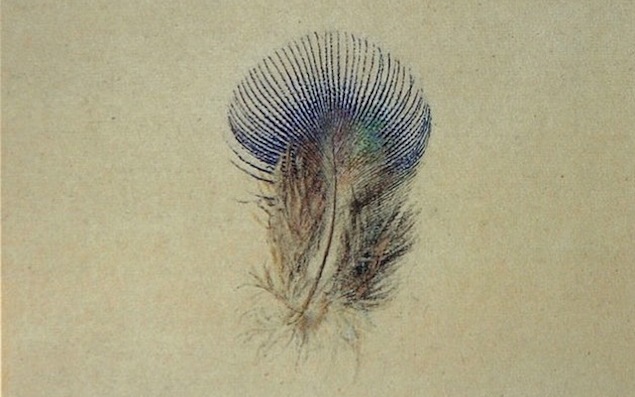Leisure • Art/Architecture
On the Importance of Drawing
Whenever something looks interesting or beautiful, there’s a natural impulse to want to capture and preserve it – which means, in this day and age, that we’re likely to reach for our phones to take a picture.
Though this would seem to be an ideal solution, there are two big problems associated with taking pictures. Firstly, we’re likely to be so busy taking the pictures, we forget to look at the world whose beauty and interest prompted us to take a photograph in the first place. And secondly, because we feel the pictures are safely stored on our phones, we never get around to looking at them, so sure are we that we’ll get around to it one day.
These problems would seem to be very much of today, a consequence of the tiny phones in our pockets. But they were noticed right at the beginning of the history of photography, when the average camera was the size of a grandfather clock. The first person to notice them was the English art critic, John Ruskin. He was a keen traveller who realised that most tourists make a dismal job of noticing or remembering the beautiful things they see. He argued that humans have an innate tendency to respond to beauty and desire to possess it, but that there are better and worse expressions of this desire. At worst, we get into buying souvenirs or taking photographs. But, in Ruskin’s eyes, there’s one thing we should do and that is attempt to draw the interesting things we see, irrespective of whether we happen to have any talent for doing so.

John Ruskin, John Everett Millais, 1853-54
Before the invention of photography, people used to draw far more than they do today. It was an active necessity. But in the mid-19th century, photography killed drawing. It became something only ‘artists’ would ever do, so Ruskin – passionate promoter of drawing and enemy of the camera – spent four years on a campaign to get people sketching again. He wrote books, gave speeches and funded art schools, but he saw no paradox in stressing that his campaign had nothing to do with getting people to draw well: ‘A man is born an artist as a hippopotamus is born a hippopotamus; and you can no more make yourself one than you can make yourself a giraffe.’
So if drawing had value even when it was practised by people with no talent, it was for Ruskin because drawing can teach us to see: to notice properly rather than gaze absentmindedly. In the process of recreating with our own hand what lies before our eyes, we naturally move from a position of observing beauty in a loose way to one where we acquire a deep understanding of its parts.

Study of Part of the Trees in Turner’s ‘Crossing the Brook’, John Ruskin, before 1872
Ruskin was very distressed by how seldom people notice details. He deplored the blindness and haste of modern tourists, especially those who prided themselves on covering Europe in a week by train (a service first offered by Thomas Cook in 1862): ‘No changing of place at a hundred miles an hour will make us one whit stronger, happier, or wiser. There was always more in the world than men could see, walked they ever so slowly; they will see it no better for going fast. The really precious things are thought and sight, not pace. It does a bullet no good to go fast; and a man, if he be truly a man, no harm to go slow; for his glory is not at all in going, but in being.’
So he slowed things down and recommended we spend far longer looking at impressive things, even quite simple things. His own drawings showed the way.

Study of a Peacock’s Breast Feather, John Ruskin, 1875
It is a measure of how accustomed we are to rushing that we would be thought unusual and perhaps dangerous if we stopped and stared at a place for as long as a sketcher would require to draw it. Ten minutes of acute concentration at least are needed to draw a tree; the prettiest tree rarely stops passers-by for longer than a minute.
Summing up what he had attempted to do in four years of teaching and writing manuals on drawing, Ruskin wrote (in a beautiful passage it’s worth quoting in full):
‘Let two persons go out for a walk; the one a good sketcher, the other having no taste of the kind. Let them go down a green lane. There will be a great difference in the scene as perceived by the two individuals. The one will see a lane and trees; he will perceive the trees to be green, though he will think nothing about it; he will see that the sun shines, and that it has a cheerful effect; and that’s all! But what will the sketcher see? His eye is accustomed to search into the cause of beauty, and penetrate the minutest parts of loveliness. He looks up, and observes how the showery and subdivided sunshine comes sprinkled down among the gleaming leaves overhead, till the air is filled with the emerald light. He will see here and there a bough emerging from the veil of leaves, he will see the jewel brightness of the emerald moss and the variegated and fantastic lichens, white and blue, purple and red, all mellowed and mingled into a single garment of beauty. Then come the cavernous trunks and the twisted roots that grasp with their snake-like coils at the steep bank, whose turfy slope is inlaid with flowers of a thousand dyes. Is not this worth seeing? Yet if you are not a sketcher you will pass along the green lane, and when you come home again, have nothing to say or to think about it, but that you went down such and such a lane.’

























